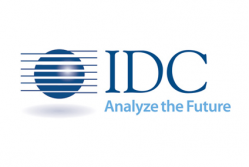Africa’s smartphone market saw a 7.1% decline in shipments quarter on quarter (QoQ) in Q1 2019 to total 21.5 million units, according to the latest insights from International Data Corporation (IDC).
The global technology research and consulting firm’s recently published Quarterly Mobile Phone Tracker shows the continent’s two biggest markets – Nigeria and South Africa – underperformed due to seasonal effects, posting QoQ declines of 14.7% and 23.4%, respectively.
“While Africa’s smartphone market experienced a QoQ decline, shipments actually increased 5.6% when viewed year on year (YoY),” says Arnold Ponela, a research analyst at IDC. “The YoY increase indicates that the market is showing some signs of improvement, while the QoQ decline can be attributed to the traditionally weaker performance of Q1 versus the seasonal buoyancy of Q4, in addition to disappointing results in some large markets.”
Nigeria saw smartphone shipments of 2.3 million units in Q1 2019, down 11.9% YoY. The country’s poor performance can be attributed to a three-week embargo on shipments of Chinese mobile phone brands into the country, which negatively affected major market players. Economic activity is usually slow in the first quarter and in Q1 2019 it was further exacerbated by widespread insecurity and the one-week postponement of the general election.
South Africa’s overall mobile phone market contracted 4.0% YoY in Q1 2019 to total 4.7 million units. “The decline can be attributed to seasonal factors, with Q1 traditionally being the slowest quarter of the year,” says Ponela. “There was also an issue with overstocking in the channel because of the buoyant volumes seen during Q4, traditionally the strongest, when demand is stirred by Black Friday and the Christmas season.”
Africa’s smartphone market continues to be spurred by the growing popularity of low-end to mid-range devices. Transsion brands (Tecno and Itel) top these segments and remain the continent’s leaders in terms of overall smartphone shipments, together accounting 33.1% of the market’s volume in Q1 2019. Samsung followed in second place with 24.5% unit share. Huawei ranked third with a unit share of 11.8%. “With most of the continent’s markets experiencing numerous economic challenges, it is clear that cheaper phones offering better value will increasingly dominate the market,” says Ponela.
In the feature phone space, shipments were down 5.8% QoQ and 0.3% YoY in Q1 2019, with shipments totaling 31.6 million units. Feature phones still constitute a significant 59.9% share of the total mobile phone market due to their relative affordability and durability, and they continue to play an important role in connecting even more Africans to the internet. Transsion brands Tecno and Itel continue to dominate the feature phone landscape with a combined unit share of 59.7%, followed in third place by HMD with 9.2% share.
Looking ahead, IDC expects Africa’s overall mobile phone market to total 50.9 million units in Q2 2019, reflecting a YoY decline of 5.3% caused by sharp downturns in most countries. “Africa is susceptible to challenging local macroeconomic environments as well as to the global tensions surrounding international trade,” says Ramazan Yavuz, a research manager at IDC. “Another factor is the rise of protectionist measures aimed at controlling smartphone shipments in multiple countries, which causes sudden short-term swings in the market’s performance.”
IDC’s research shows that 4G LTE networks are continuing to spread their reach in Africa, with shipments of 4G LTE devices increasing 15.1% YoY in Q1 2019 to constitute 67.1% of the smartphone market. “A drop in prices for entry-level 4G phones and discounted tariff and data plans on the operator side are driving this growth,” says Yavuz. “However, despite the rapid penetration of 4G handsets, 2G and 3G mobile devices remain resilient as an economical option for price sensitive consumers.”

